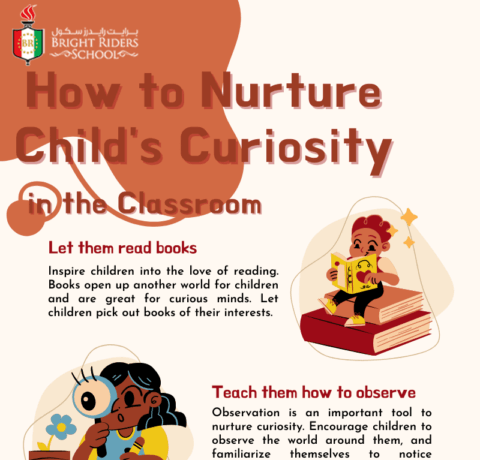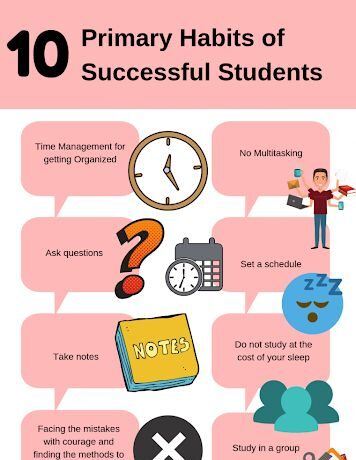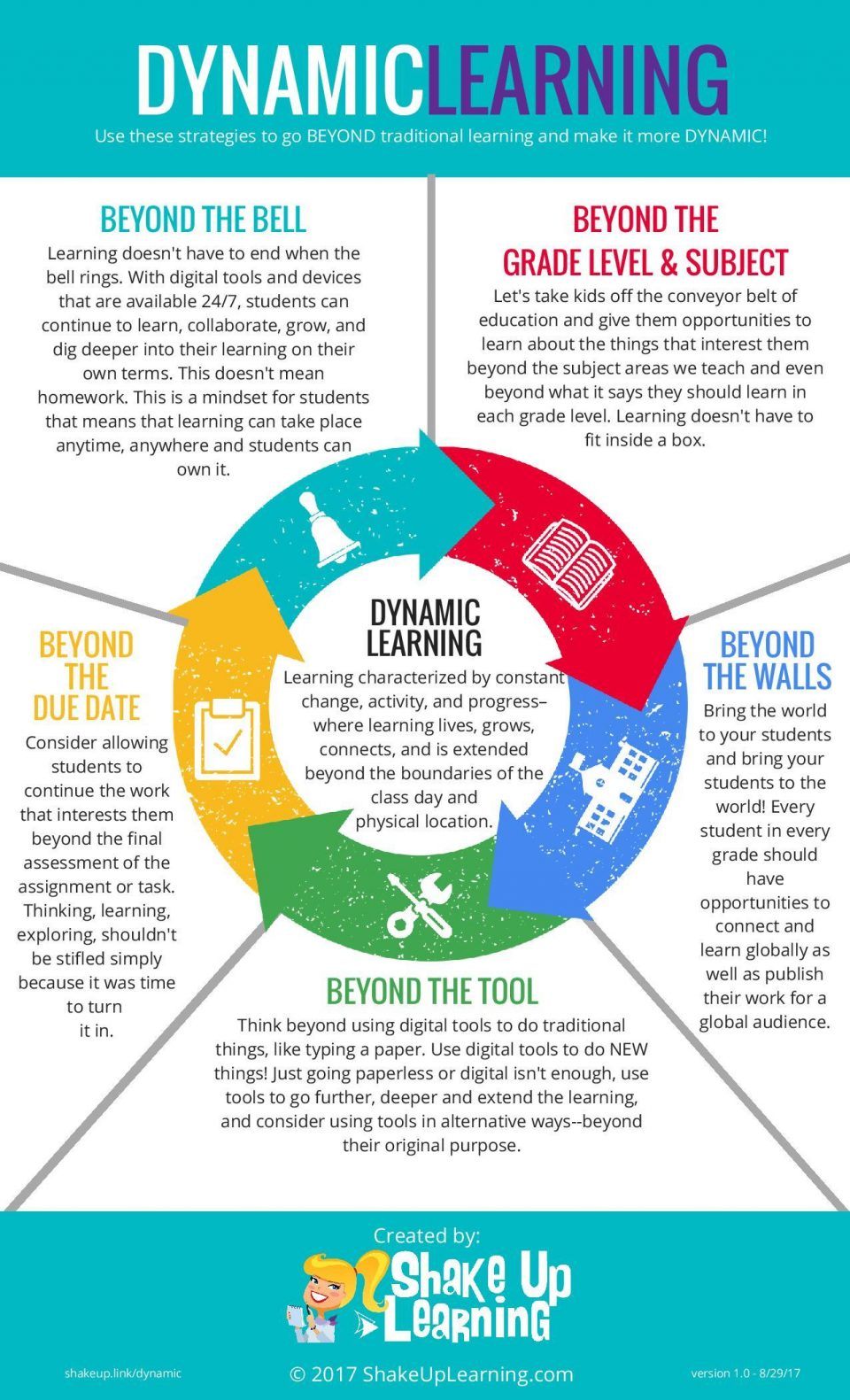Dynamic Learning Infographic
Education, just like anything else, is loaded with trends, buzzwords, and enough acronyms to create alphabet soup! We are constantly trying to find new ways to support our students and often times we are attracted to the next new thing–the next magic acronym that’s going to solve all of our problems. Teaching isn’t that simple. Teaching is much more art than science. Formulas don’t work because one size doesn’t fit all–it doesn’t fit all teachers and it doesn’t fit all students.
Static Learning vs Dynamic Learning
- Static Learning: Static learning is learning that is lacking in movement, action, or change, especially in a way that is not engaging–where learning happens in short bursts and is often demonstrated in one-and-done activities, short-term assignments, or worksheets (even digital worksheets), that are confined within the traditional bounds of the school system, school day, and the school walls.
- Dynamic Learning: Dynamic learning is learning characterized by constant change, activity, and progress–where learning lives, grows, connects, and is extended beyond the boundaries of the class day, beyond the physical location, beyond using tools as digital substitutes, and even beyond due dates.
When you think DYNAMIC, think:
- Beyond the Bell (a mindset): Learning doesn’t have to end when the bell rings. With digital tools and devices that are available 24/7, students can continue to learn, collaborate, grow, and dig deeper into their learning on their own terms. This idea of going beyond the boundary of the class day doesn’t mean homework. This is a mindset for students that means that learning can take place anytime, anywhere and students can own it. To become a more dynamic learner, students need to take ownership of not only their learning but their time.
- Beyond the Grade Level and Subject Area: As Sir Ken Robinson tells us in his TED Talk, “How Schools Kill Creativity,” the education system we have today is still based on a factory model, where students are basically placed on a conveyor belt. What they learn is dictated by their age and grade level, just what fits inside the factory “box.” Let’s take kids off the conveyor belt of education and give them opportunities to learn about the things that interest them beyond the subject areas we teach, while still drawing connections, and even beyond what it says they should learn in each grade level. Learning doesn’t have to fit inside a box.
- Beyond the Walls: Bring the world to your students and bring your students to the world. Every student in every grade should have opportunities to connect and learn globally as well as publish their work online for a global audience. I ask this question regularly across the county, The opportunities for students to publish their work online are almost endless.
- Beyond the Tools: Think beyond using digital tools to do traditional things, like typing a paper. Use digital tools to do NEW things! Just going paperless or digital isn’t enough, use tools to go further, deeper and extend the learning, and consider using tools in alternative ways–beyond their original purpose. Reach beyond what you think a digital tool can do and should be used for. Consider alternative ways that tools can be used to do new things.
- Beyond the Due Date : Consider allowing students to continue the work that interests them beyond the final assessment of the assignment or task. Thinking, learning, exploring, shouldn’t be stifled simply because it was time to turn it in. I think this idea may be the one that teachers will struggle with the most. Remember, we are trying to move to more dynamic learning experiences that have less focus on the one-and-done.







You can adjust your cookie preferences here.